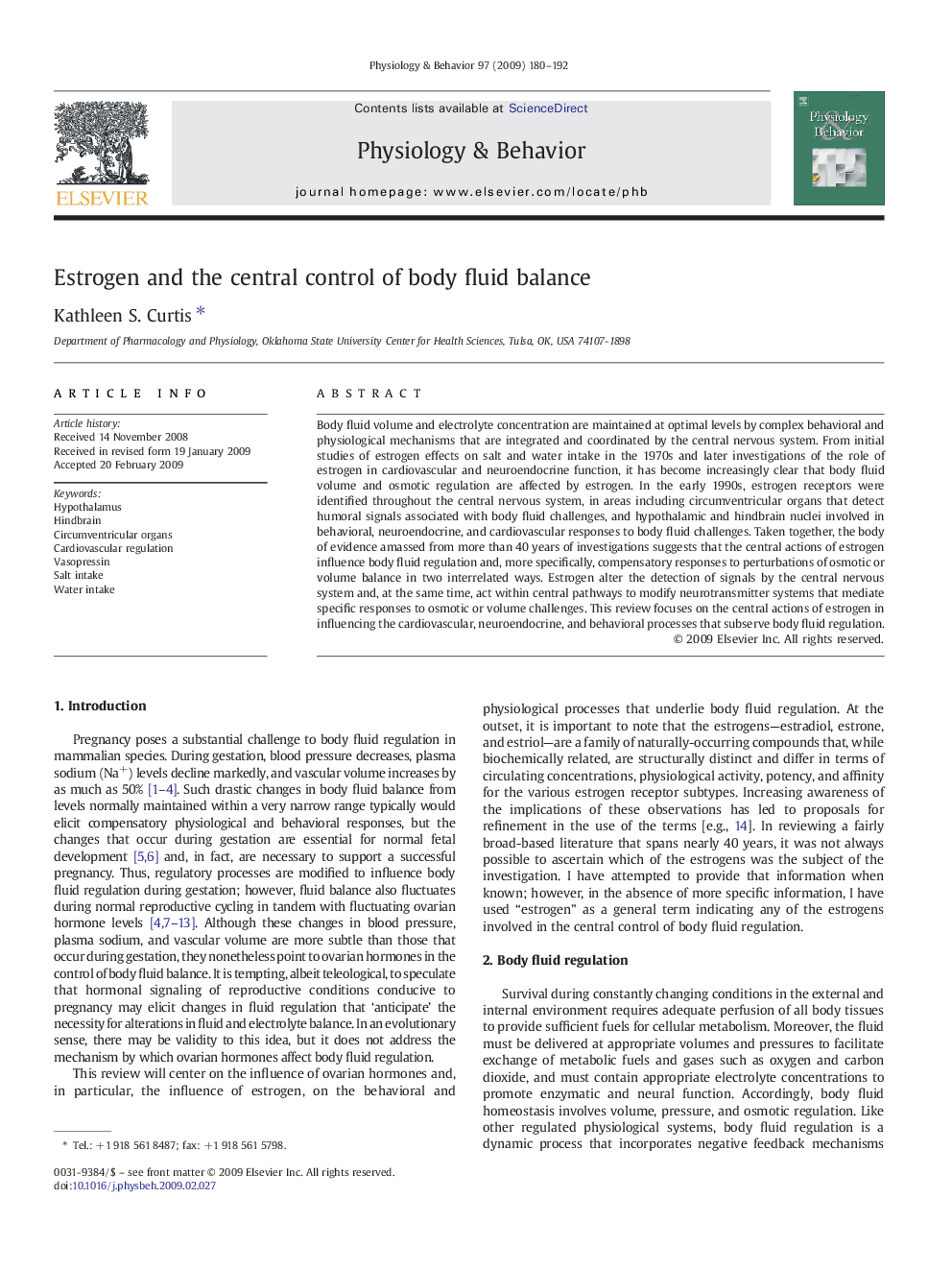| Article ID | Journal | Published Year | Pages | File Type |
|---|---|---|---|---|
| 2845171 | Physiology & Behavior | 2009 | 13 Pages |
Body fluid volume and electrolyte concentration are maintained at optimal levels by complex behavioral and physiological mechanisms that are integrated and coordinated by the central nervous system. From initial studies of estrogen effects on salt and water intake in the 1970s and later investigations of the role of estrogen in cardiovascular and neuroendocrine function, it has become increasingly clear that body fluid volume and osmotic regulation are affected by estrogen. In the early 1990s, estrogen receptors were identified throughout the central nervous system, in areas including circumventricular organs that detect humoral signals associated with body fluid challenges, and hypothalamic and hindbrain nuclei involved in behavioral, neuroendocrine, and cardiovascular responses to body fluid challenges. Taken together, the body of evidence amassed from more than 40 years of investigations suggests that the central actions of estrogen influence body fluid regulation and, more specifically, compensatory responses to perturbations of osmotic or volume balance in two interrelated ways. Estrogen alter the detection of signals by the central nervous system and, at the same time, act within central pathways to modify neurotransmitter systems that mediate specific responses to osmotic or volume challenges. This review focuses on the central actions of estrogen in influencing the cardiovascular, neuroendocrine, and behavioral processes that subserve body fluid regulation.
